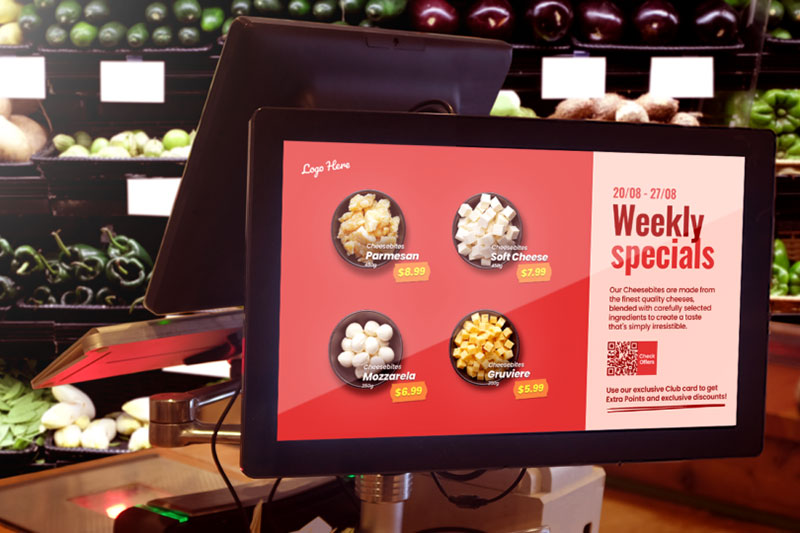It’s tough enough to make a good impression on shoppers with point-of-sale materials (POSM), it’s another challenge altogether to appeal to eco-conscious shoppers.
Oftentimes shoppers won’t stick around to read why a product is eco-friendly; they would simply infer it from their first impression of it in the supermarket. If a POSM display doesn’t scream ‘eco-friendly’, ‘natural’ or ‘organic’, then the message may never reach shoppers.
What are some of the best practices to create POSM displays that let shoppers immediately understand that a brand goes green?
Here are 5 that we can start with:
1. Pick the right colours
Colours convey meaning. Used right, colours can convey meaning in more immediate ways than words can. What are the right colours to convey that a product is natural or eco-friendly?
It depends on what brands want shoppers to feel, and what associations those feelings invoke. For products that are sold as ‘natural’, colours that don’t come across as too strong send the right message.
If the colours used on a free standing display are gentle, the products on it would be associated with the same feeling. Think muted colours that are closely associated with nature, such as pastel green (plants) and yellow (sunlight).
Modular isle unit display for “Experience Nature’s Poetry” campaign featuring a variety of natural cosmetics (Source: THIMM)
What about colours related to eco-friendly and sustainability for the environment? Think earthy tones, such as wood brown and vivid leaves of green. It’s like being in a forest or a farm – one glance and the association with ‘eco’ is established.
End freezer arch display for a Harvest Gourmet chiller (Source: POP Specialist)
2. Employ sustainable materials
Shoppers who are eco-conscious know when brands are being truly sustainable with their tactical marketing efforts, or if they’re only putting on a front to appear eco-friendly. They pay attention to the details i.e. the materials used by brands for their displays.
So, it’s always wise for brands who want to appeal to that market to walk the talk and employ sustainable materials in all they do, including POSM displays.
One example of this comes from Holland & Barrett, a health and wellness retailer in the UK which recently launched a new flagship store featuring recyclable materials for the entire store, on top of highly efficient lighting that saves significantly on energy.
Holland & Barrett flagship store in Coventry, UK (Source: The Grocer)
At first glance, it seems like any ordinary store furnished to appear eco-friendly, but in truth its design is thoroughly eco-friendly. And eco-conscious shoppers would also be glad to find that it only stocks cruelty-free and vegan beauty products.
This proves that truly sustainable POSM displays are possible and don’t always have to stand out visually.
Whether it’s a simple counter top display or an elaborate block display setup, brands can appeal to eco-conscious shoppers by something as straightforward as a display made out of 100% recyclable materials.
3. Cut down on single-use (waste) packaging and displays
While it’s almost always a good move for brands to aim for the use of sustainable materials, avoiding materials harmful to the environment is equally important.
It’s not enough to have a fully bamboo display if the products being displayed are held in layers of single-use plastic wrap, for instance. Similarly, it would not make sense to create recycled or upcycled standees that are only used once and then disposed to create more waste.
At times brands would use more materials to display their products as more premium, and even green, organic brands have occasionally fallen for this mistake.
A good question to ask when it comes to preventing these faux pas for eco-friendly and natural brands is whether unnecessary waste would be caused to achieve a ‘green’ appearance.
In order to appear nicer in displays, produce displays in grocery stores often feature fresh goods individually wrapped in plastic (Source: Reddit)
4. Let shoppers in on your proactive sustainability practices
If there is one thing that eco-conscious shoppers want, it is for sustainability that saves the planet to be a joint effort. Everyone needs to play their part, not just brands.
Which is why it’s a good idea for brands to create POSM displays that do more than showcase products. Yes, buy the products, but while you’re at it here’s an activity to let you find out what your carbon footprint is; here’s a bin for you to drop off your empty plastic bottle containers for recycling too.
That’s what cosmetics brand L’Occitane en Provence has done for its Eco Concept Mega Store in Pacific Place Mall, Hong Kong. By not only going green but inviting shoppers to do so collaboratively, the brand is able to engage in meaningful conversations with consumers – and it starts with invitational POSM displays.
Eco Concept Store by L’Occitane en Provence (Source: Inside Retail Asia)
How to make shoppers see green
Being eco-friendly doesn’t always come across as obviously as brands would like, which makes it necessary for them to emphasize that aspect of their products.
The quickest way is to reach them where they shop. If they’re already on the lookout for products that are eco-friendly or organic, then the displays that most closely match their ideas of what eco-friendly or organic products look like would draw them in.
What do you look out for in supermarket POSM displays when searching for eco-friendly or organic goods?










